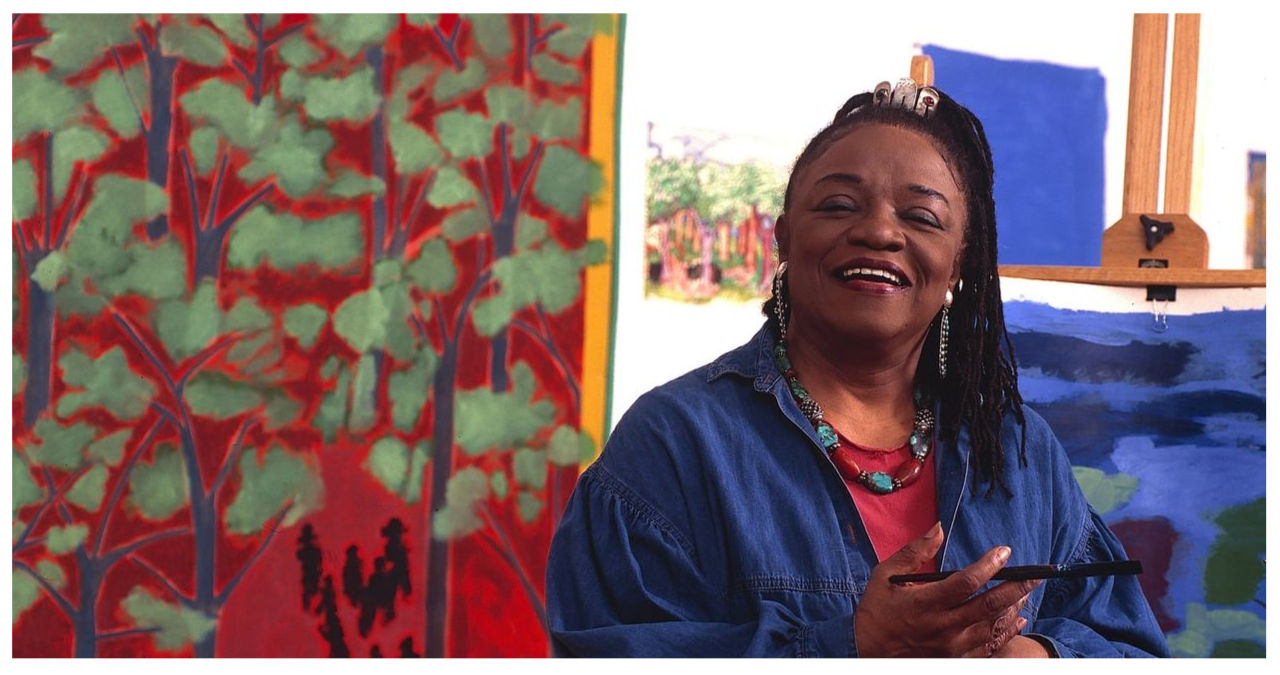Faith Ringgold, a versatile artist known for her exploration of race and identity through multimedia art, passed away at the age of 93 in her New Jersey home, according to her daughter who spoke to The New York Times.
Ringgold became well-known for her intricately crafted quilts that vividly portrayed the everyday experiences of African American women. In addition to her training as a painter and sculptor, she explored various other artistic mediums, combining her creative expression with activism to create politically charged works that reflected the racial tensions of the 1960s and 1970s. She actively joined protests alongside other individuals advocating for increased representation of Black and women artists in prestigious art institutions, and openly criticized museums that excluded them from their collections.
“In 1992, she expressed her belief that art provides a unique platform for self-expression and action, particularly in a world where access to power is limited to a privileged few. As she shared with the Orlando Sentinel, art allows anyone to tap into their creativity and make a meaningful impact.”
Ringgold transformed her acclaimed 1988 design, “Tar Beach,” a story quilt, into a children’s picture book that earned her the prestigious Caldecott Award. This marked the start of her journey as an illustrator of storybooks. Building on her commitment to highlighting the stories and histories of Black women, she went on to create captivating artwork and text for picture books centered around influential figures such as Rosa Parks and Harriet Tubman, all aimed at young readers.
Growing up in Harlem, Faith Ringgold was immersed in a vibrant community of influential Black artists. Surrounded by esteemed figures like James Baldwin and inspired by the sounds of jazz, Ringgold’s artistic journey was shaped by her rich cultural upbringing. Born in 1930, she had the privilege of having Duke Ellington and Dinah Washington as her childhood neighbors. In her 20s, she pursued her passion by obtaining two art degrees from the City College of New York. Reflecting on her career in 1990, Ringgold emphasized her journey of breaking free from the confines of a Eurocentric art world and establishing her unique artistic style.
“We used to mimic Greek busts, imitate Degas, and replicate various artworks,” she reminisced. “There was a prevailing belief that we lacked the expertise to be truly original, and when we did venture into originality, we often became targets of mockery.”
Faith Ringgold’s artwork can be found in prestigious art collections like the Metropolitan Museum of Art and the Guggenheim. Her exhibitions have taken place globally, including a notable display at the White House. Additionally, Ringgold has shared her expertise as a faculty member at esteemed institutions such as the University of California, San Diego and the Pratt Institute in Brooklyn.
Her breakthrough piece, “Die,” has earned a permanent spot in the esteemed collection of the Museum of Modern Art. It’s worth noting that this very institution was once the target of her protest, as she advocated for greater representation of women artists.



